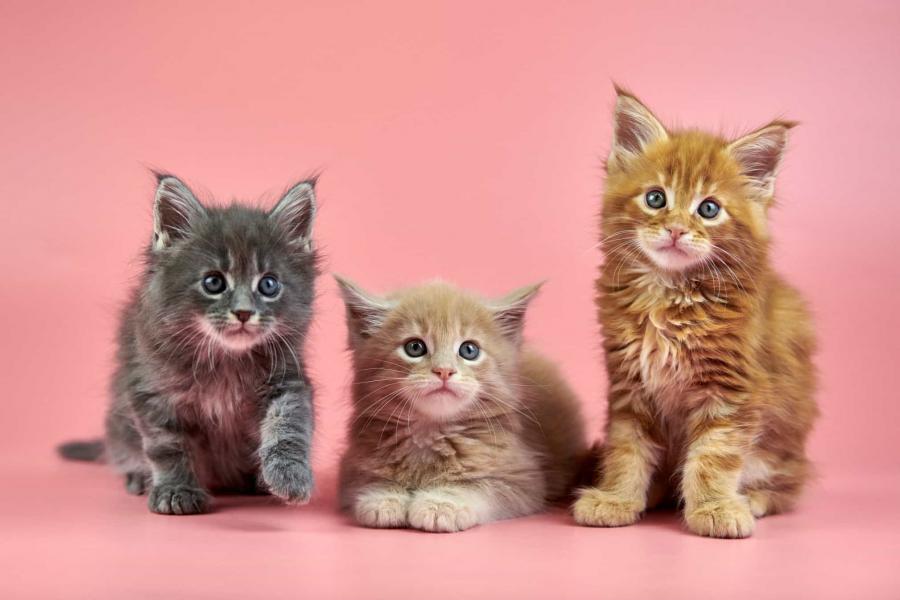Everyone loves their cat, but they can create a bit of a headache if you’re trying to minimise waste.
One extra tricky area is creating a sustainable toilet routine for your cat, which is just as important as creating yourself a zero waste bathroom routine.
Is there such a thing as zero waste cat litter?!
Thankfully, yes there is.
Read on for my tips on creating a zero waste toilet routine for your cat, from the litter you use, to eco-friendly ways to dispose of the waste afterwards.
Zero waste cat litter options
The first and most important thing to consider when transitioning your cat to zero waste is the litter you’re using.
Clay-based litter is a cheap and convenient option for cat owners. However, this convenience comes at an environmental cost. Clay litter is produced using a very destructive process called strip-mining.
Strip-mining involves clearing an area of land of everything growing there, before digging a hole to reach the minerals below. When the miners are finished, the land is left barren.
“75% of cat litters on the market are made using bentonite clay”
Stanford University – Digging Deeper: The Scoop on Cat Litter
Furthermore, clay litter is not biodegradable so will sit in landfill forever once you are done using it. Luckily there are lots of sustainable, biodegradable options out there for you to pick from. I’ve listed a few of the options below:
Corn
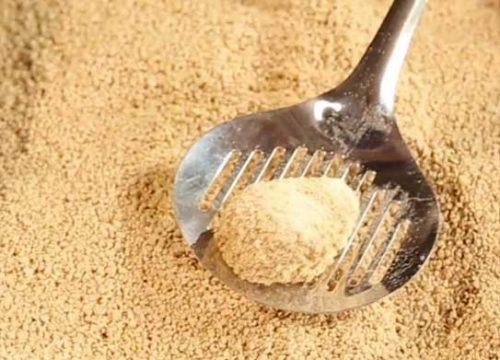
World’s best cat litter, one of the most popular environmentally friendly options, is corn-based. It comes large packs, and the packaging is biodegradable!
Corn litter has great clumping ability meaning it is easy to clean and controls odour well. Corn is biodegradable so you can compost World’s Best Cat Litter (along with all the options listed here).
Wood (Pine)
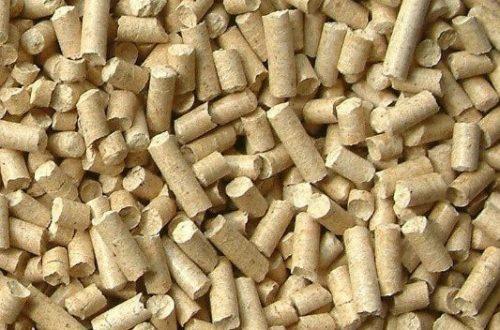
Wood (Pine) – Cat litter made from wood is generally made out of reclaimed Pine, so no new trees are cut down to make it.
The natural aroma of the shavings means you don’t have to worry about your litter box smelling bad. This zero waste litter tends to be one of the cheaper options.
Recycled Paper
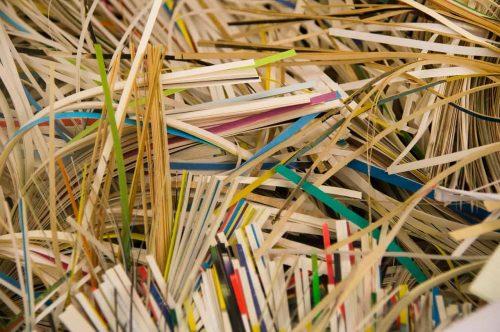
Yesterday’s news is made out of recycled paper. This is another cheap option, but bear in mind the litter will have to be changed often.
If you ever have to leave it for a few days then I would pick something else (especially as odour control isn’t the greatest).
If you have a sensitive cat this is a great option because it is very soft, vets recommend this litter if your cat has any paw injuries. Another positive is the minimal tracking and zero dust.
Wheat
Wheat contains natural enzymes to help control odours, so a good choice if this is important to you. It is a clumping litter, but the clumps don’t hold as well as something like corn.
Other alternatives
This is by no means a complete list, other options I found include green tea, walnut, tofu, bamboo, coconut and grass seed.
Every cat is different, so don’t be disheartened if your first option doesn’t work out, try a different one until you find one that works for both you and your cat!
To make the transition easier for your cat, introduce any new litter slowly. Replace 1/4 of the current litter with the new litter each week for a month, and your cat will barely notice the change.
Once you’re cat is feeling comfortable, why not turn the attention to yourself and try out some different eco-friendly, zero waste toilet paper options.
Buying the litter – buy in bulk
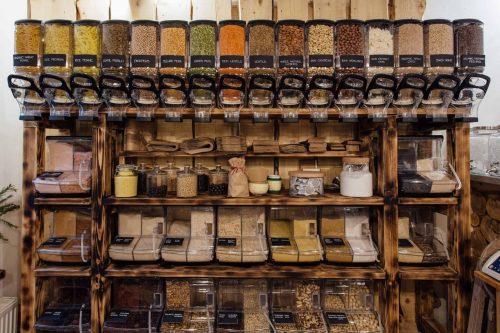
The general principles for transitioning to zero waste remain the same for cats.
- Reduce single-use plastic by choosing more durable and sustainable materials.
- Buy in bulk using refills where possible to eliminate any packaging used.
Shop around your local stores and see if any offer the option for you to bring in your own containers to transport the litter.
Be careful when using refills as sometimes stores just fill the bins from the smaller packages which defeats the point!
If you can’t find anywhere offering refills, then look for packaging which is biodegradable or recyclable. Buy the largest pack size they have, buying in bulk tends to be cheaper in the long run!
Once you have finished the litter, try to reuse the bag. Some ideas include using it to line bins or using it to store any kitchen compost you have.
Homemade cat litter options
If you’re wondering whether it’s possible to make your own cat litter, then yes, you can!
Homemade cat litter helps save on the inevitable packaging waste that comes with buying something.
There are several options for the material choice with homemade cat litter:
Shredded Paper
I mentioned above that you could buy litter made out of recycled paper, but this is also something you can just make at home.
If you have access to lots of leftover paper (if you work in an office you definitely do!) simply shred it up, add some baking soda to help with the odour and fill up the litter tray.
If your cat seems apprehensive, then you can add some water and sustainable dish soap to the paper and baking soda mix, rinse it then let it dry and crumble it before use. This makes it look more like traditional cat litter.
The paper will need to be changed often, so have a supply of paper on hand to keep from running out. If you find you don’t enough paper, try asking local shops for their old newspapers.
Shredded paper alone will not clump, but you can soak it in soap before hand to make it clump. Watch the video below to see how to make clumping paper cat litter at home.How to Make Your Own Kitty Litter
Sand / Dirt
Another option is sand or dirt. Cats tend to head to sandpits/plant beds when they are outside to do their business, so you should have no problem getting your cat to use this litter.
Head down to your local gardening store and they will be able to sell you both in bulk, package free.
One downside is that these materials tend to be dusty and can track around the house. Consider getting a litter box mat to help minimize this.
Wood Chips / Sawdust
If you live in a rural area, chances are there is somewhere nearby that will be happy to unload some sawdust on you. Look for local woodwork shops or horse barns.
If you are planning on composting your litter (more on this later) then fresh sawdust is one of the best options.
These materials have good odour control, but sawdust can be quite dusty. If you can find some wood chips these will smell nice and be dust-free!
If you can’t source any locally, you can find lots of different kinds of wood shavings for sale online.
Many of which like these cedar shavings support local communities be helping them use waste materials. Others are marketed as animal bedding, but work just as well for a zero waste kitty litter
Train your cat to go outside
If your cat can go outside, then you can eliminate the need for any cat litter at all.
Install a catflap and your cat will be free to relieve themselves outside whenever they please, creating zero waste in the process.
However, if you live near the sea or have edible food growing in your garden, then this is not a great option due to parasites that can live in your cats waste.
I’ll explain more about this later in the article.
Get a sustainable litter box
Another consideration is what litter box to use.
Plastic trays are very cheap but do not last very long so tend to be replaced often, which is not sustainable. They get scratched over time and become very hard to clean, which leads to nasty smells.
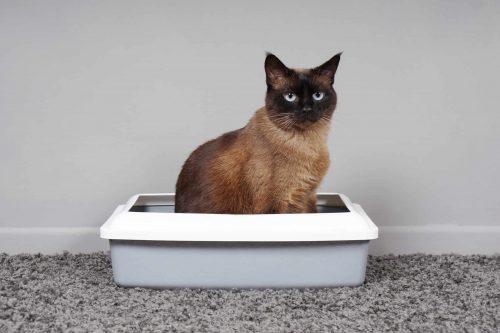
Stainless steel litter boxes are a great eco-friendly alternative to plastic. They are easy to clean, don’t get scratched and won’t start to smell.
You can buy a stainless steel cat litter tray, or if you want to save a bit of money you can buy an industrial tray instead.
Make sure the scooper you are using is durable. Stainless Steel is a lot more sturdy than plastic, making the poop easier to scoop.
How do I dispose of the litter?
Once you have transitioned your cat to a more eco-friendly cat litter, you need to decide how to dispose of it.
Why flushing is not an option
There is plenty of advice out there on flushing cat litter. If that is what we do with human waste, why not use the same system for our cats?
Cats faeces can contain a parasite called Toxoplasma gondii which is harmful to both wildlife and humans. It is especially harmful to pregnant women as it can harm an unborn baby.
Unfortunately, our current waste system can’t remove this parasite, so flushing cat waste will potentially be flushing this parasite into our water systems.
“Sea otters are particularly vulnerable to T. gondii, and recent studies have found that sea otters from areas of high freshwater runoff were three times more likely to contain T. gondiiantibodies, indicating current or past infection.”Stanford University – Digging Deeper: The Scoop on Cat Litter
So if you cant flush the waste, what can you do?
Compost
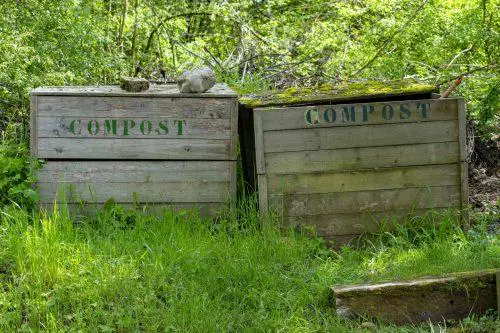
The best option to create a truly zero-waste cat is composting. There are two things you need to know before you start:
- Make sure you are using a compostable litter – all the natural options above will be fine!
- Keep cat waste compost separate from general waste compost, and do not use it on anything which will later be consumed.
Cat waste takes longer to decompose than normal compost, and it may have a stronger smell, but you can easily fix this by using extra sawdust or soil in the bin.
Other than these small differences, composting cat waste follows pretty much the same rules as general composting. Read this guide for more details on the composting process.
If you don’t have the space to keep your kitty compost then check with your local compost collection service and see if they accept cat litter waste – you might be surprised!
2. Use a dedicated bin
If you are not able to compost the next best option to minimise waste is to have a dedicated bin for your zero waste cat litter. This will reduce the amount of bags needed to deal with the waste.
You can
- Use a normal bin with a compostable liner and throw the bag into your normal trash when it’s full.
- Get a dedicated bin which has been specifically designed to deal with bad-smelling cat waste, this one from genie cat is a great option.
You can avoid the used of plastic bags altogether by getting a stainless steel kitchen compost bin. Empty it when it’s full and wash it out with soap an water.
Another great option is getting a bin with a built-in layer of charcoal to keep any bad smells from leaking out as it was initially made for indoor compost.
3. Use compostsable bags or reuse old bags
If you find yourself needing to use bags, then make sure you’re using compostable bags or reusing other bags which would otherwise go to waste.
A great example is reusing the bag that your cat litter came in to throw it out. Reusing something is always better than buying something new to do the job!
Final thoughts
There are lots of ways to make sure your cat is as zero waste as you are, zero waste cat litter is only one part of the puzzle.
Check out our guide to zero waste lint rollers for a sustainable way to get rid of the cat hair that is inevitably everywhere!
Have I missed anything? Let me know your tips on being a zero waste cat owner.
